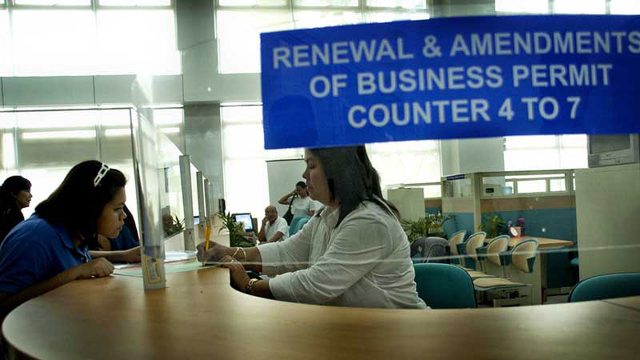The power of taxation is the lifeblood of a nation; not only does it have the power to create, but it also has the power to destroy. Being its primary source of revenue, it funds governments, making them self-sufficient as much as possible and diminishing their reliance on external funding to achieve their goals. Simultaneously, taxation serves as a policy tool to promote its initiatives and shape behavior towards its desired outcomes. These are the dual functions of taxation. One of the goals for which taxation serves these dual functions is the achievement of the United Nations’ Sustainable Development Goals.
As adopted by all UN Member States, the 2030 Agenda for Sustainable Development is a plan of action for people, planet, and prosperity. The agenda recognizes that ending poverty and other deprivations must go with strategies that improve health and education, reduce inequality, and spur economic growth, while tackling climate change and working to preserve oceans and forests. The 17 SDGs are: (1) no poverty, (2) zero hunger, (3) good health and well-being, (4) quality education, (5) gender equality, (6) clean water and sanitation, (7) affordable and clean energy, (8) decent work and economic growth, (9) industry, innovation, and infrastructure, (10) reduced inequalities, (11) sustainable cities and communities, (12) responsible consumption and production, (13) climate action, (14) life below water, (15) life on land, (16) peace, justice, and strong institutions, and (17) partnerships for the goals.
To achieve this objective, the Philippines, through the Department of Finance and Bureau of Internal Revenue (BIR), has implemented a range of programs and initiatives that fulfill the dual function of taxation.
For its first function, the legislature has passed a series of tax reforms amending the National Internal Revenue Code designed to streamline tax administration and promote efficiency. The first tranche of reforms was the passage of the Tax Reform for Acceleration and Inclusion (TRAIN) in 2018, which resulted in more money in the taxpayer’s pocket. The second iteration of the tax reforms was the Corporate Recovery and Tax Incentives for Enterprises (CREATE) Act of 2021, which aims to boost economic recovery from the downturn brought by the COVID-19 pandemic. Further into these reforms is the Ease of Paying Taxes (EoPT) Law, which passed this year. Currently, under the chambers of the legislature, there are two more taxation measures: CREATE More and VAT on Digital Services.
To modernize tax administration and collection, the BIR, under the leadership of its current commissioner, is continuously transforming its services and practices into become more paperless with the implementation of the Digital Transformation (DX) Program. This is aimed at modernizing BIR operations through the adoption of digital technology. This enhances tax administration and reduces opportunities for corruption and tax evasion. At the core of the DX program is the Online Registration and Update System (ORUS), which enables taxpayers to transact, register, and de-register with the BIR online. Other eServices offered by BIR are eBIR Forms, eFPS, eAFS, eSubmission, and ePAY, which are focused on paperless electronic filing and payment; eONETT, which allows taxpayers to transact online their One-Time Transaction (ONETT) pertaining to the taxable sale of real property; eTSPCert, a facility for Tax Software Providers (TSPs) to apply for and process their certification; and, currently in pilot testing, the eTCS for taxpayers to conveniently file and pay online for their tax clearance. Furthermore, the BIR has implemented transfer pricing guidelines to combat tax avoidance, specifically, the practice of base erosion and profit shifting between related parties situated in various tax regimes or jurisdictions.
Beyond providing for funding, these taxation reforms also contribute to the achievement of the 17 SDGs by leveraging taxation’s power to create. The TRAIN law, which reduced the personal income tax and resulted in higher take-home pay, helps the country meet the various SDGs, particularly SDG 1. TRAIN is also interrelated with the Philippine Green Jobs Act with its amendment on VAT provisions. Additionally, Revenue Regulations No. 05-2019, which implements the tax incentives provisions of such an act, grants incentives to qualified business enterprises to encourage them to generate and sustain green jobs.
Under the CREATE Act, the government drafted the Strategic Investment Priority Plan (SIPP) for works deemed to be critical to the country’s development, such as artificial intelligence and high-tech manufacturing. Also listed under the SPP are the green projects, which include the manufacturing, assembly, establishment, and operation of electric vehicle (EV) assembly; the manufacturing of energy-efficient maritime vessels and equipment; electronic devices and circuits for smart grid and renewable energy (including wearable solar devices); bioplastics and biopolymers; renewable energy; energy efficiency and conservation projects; energy storage technologies; and integrated waste management, disposal, and recycling. Hence, as provided under the CREATE laws, enterprises can avail of income tax incentives for projects within the green ecosystem. The Office of the President has also reduced the import duty on EVs, their parts, and their components. This targeted fiscal incentive program aligns with multiple Sustainable Development Goals, specifically SDGs 7,8,9,11,12, and 13.
Other than its power to create and influence fiscal incentives, the power to tax is also the power to destroy, as popularized by Chief Justice John Marshall. Through taxation, the government has the power to levy discriminatory taxation to deter certain goods or activities deemed harmful to public health or social well-being. With its power to destroy, the government enacted sin taxes to promote health by discouraging vice through taxation while simultaneously collecting more revenue. Sin taxes are a form of regulation to discourage demand for “sin goods.” Per se, an excise tax is imposed on tobacco products, vapor products, cigarettes, and sweetened beverages to positively influence people toward health-conscious choices. In addition, the revenue collected has raised funds for the Department of Health and funded the enrollment of indigent Filipinos in PhilHealth. The imposition of these sin taxes primarily contributes to the achievement of SDG 3.
Moreover, the digitization of tax systems as provided in the EoPT Law and championed by the BIR contributes to the fulfillment of SDG 9. The BIR has allowed the use of electronic invoices, and with the implementation of EoPT, allows taxpayers to file and pay anywhere. All these new practices reduce the need for physical visits to BIR.
Overall, taxation plays a pivotal role in achieving the 17 SDGs by simultaneously providing the necessary funding for government programs to achieve the pressing global challenges. Likewise, by leveraging tax policies effectively, with taxation’s power to create and destroy, the government can influence the creation of a progressive and environmentally conscious community and foster sustainable growth towards the future.
Let’s Talk Tax is a weekly newspaper column of P&A Grant Thornton that aims to keep the public informed of various developments in taxation. This article is not intended to be a substitute for competent professional advice.
Angel Joy R. Letrondo is a semi senior from the Tax Advisory & Compliance division of P&A Grant Thornton, the Philippine member firm of Grant Thornton International Ltd.
pagrantthornton@ph.gt.com












